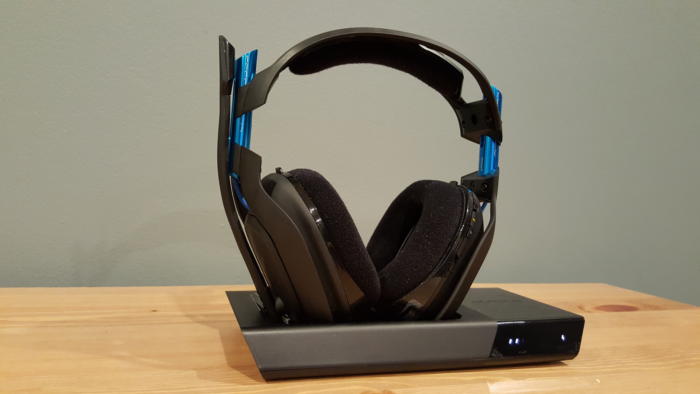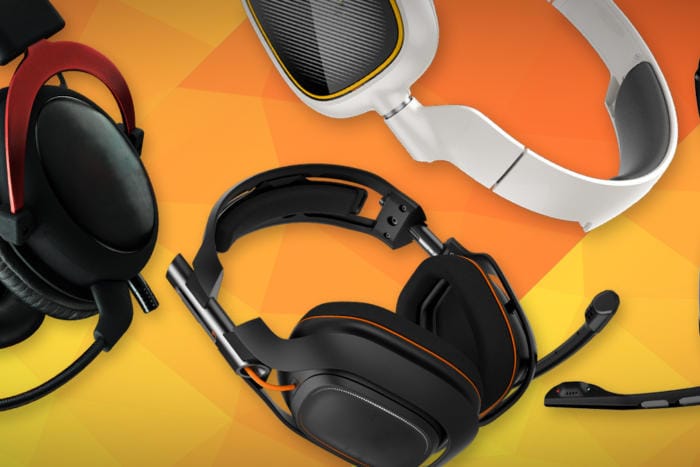[responsivevoice_button rate=”1″ pitch=”1.2″ volume=”0.8″ voice=”US English Female” buttontext=”Story in Audio”]
Best gaming headsets 2020: Reviews and buying advice
The next great peripherals war is being waged over your ears. After every company on the planet put out a gaming mouse and then a mechanical keyboard, they turned their attention to headsets. So many headsets.
We know you don’t want to scroll through every single headset review when all you want is a simple answer: “What’s the best gaming headset I can buy with my hard-earned dollars?” This page holds the answers you seek, no matter what your budget is.
We’ll keep updating our recommendations as we look at new products and find stronger contenders.
Updated 6/6/20 to include our review of Razer’s Kraken X budget headset, a solid no-frills option at $50. See the bottom of this article for links to all of our headset reviews.
Best all-around gaming headset
HyperX outdid itself with HyperX Cloud Alpha, or “HyperX Cloud III,” as I’ve termed it in my head.
The core design hasn’t changed much, meaning the Alpha brings the same combination of durability and comfort that made me fall in love with its Cloud predecessor. There are some quality-of-life upgrades though, like removable cabling and more accessible volume and mute controls.
It sounds great, too. HyperX chalks it up to the Alpha’s dual-chamber technology, which separates bass frequencies from the mids and highs. That could be the case, or it could be a gimmick—I’ve discussed it at greater length in our review. Either way, the upshot is that the Cloud Alpha sounds as good or better than plenty of its more expensive competition, and with slightly more bass kick this time around. (Read our full review of the HyperX Cloud Alpha.)
A close contender is the new Logitech G Pro X. At $130, it can’t compete with the Cloud Alpha on price, but it’s Logitech’s best headset yet, and features a beautiful aesthetic, amazing sound quality that far exceeds it price, and a fantastic microphone, making it a worthy choice.(Read our full review of the Logitech G Pro X.)
Best budget gaming headset
At $60, Astro’s A10 is very entry-level. It’s $10 more than our previous recommendation, the HyperX Cloud Cloud Stinger—still a great headset too—but a very good value.
There were compromises to hit that price, for sure. The A10 lifts some design inspiration from its more expensive siblings, but it’s a bit boxier, with a drab gray chassis and minimal decoration. It’s also 100 percent plastic.
The A10 has it where it counts though, which is to say it sounds great. We’re talking “great for a $60 headset,” of course, but still. The A10 delivers clean mids and a rich bass that comes close to mimicking the sound of Astro’s more expensive headsets and only falters in the details. Details, I might add, that most listeners probably wouldn’t even notice day-to-day. (Read our full review of the Astro A10.)
Best low-end wireless gaming headset
Corsair’s carved out a pretty healthy niche for itself at the low end of the wireless market. The new Corsair Void Pro Wireless carries the same $99 price tag as its predecessors, which even by today’s standards is an incredible bargain—about $50 cheaper than any of the competition.
The Void Pro Wireless takes getting used to, with diamond-shaped earcups and a headband that slants toward the front of the head. It’s an aggressive design, but it’s more comfortable than it looks—almost too comfortable, maintaining such light pressure on the head that it’s prone to slipping around.
Still, I’d rather a headset that’s too loose than one that puts my head in a vice grip. Oversized controls for volume, power, and mic mute are easy to find in a moment’s notice, and Corsair’s RGB lighting is top-notch (though you’ll gain four hours of battery by disabling it).
Playback is very bright, with a small-sounding and treble-heavy mix that’s tiring to listen to long-term. Spending some time with an EQ to add a touch of bass and bring down the high end a bit helps.
At least Corsair improved the microphone. That used to be this headset’s weak point, but the Void Pro Wireless’s new mic is finally on-par with the competition, picking up less background noise and reproducing voices with more clarity.
I’m not going to say the Void Pro Wireless is a fantastic headset—you won’t find that in a $99 wireless. But it’s good enough for most people, which is what you want at this price. (Read the full review of the Corsair Void Pro Wireless.)
Best mid-range wireless gaming headset
It’s a tough call replacing our former mid-tier wireless pick, the Logitech G933, with its sibling-successor the Logitech G533. Like, really tough. The G933 is an excellent headset, with crisp and well-balanced audio and a few nifty design features (like being able to store the USB dongle inside an earcup).
In some ways, I’d say the G933 is a better headset than the G533.
But I’m still replacing it. Why? Well, aesthetics are a huge reason. If you want an indication how Logitech’s design language has shifted in the past year or so, look no further than the G933 and G533. The G933 was all sharp angles and science fiction. The G533 on the other hand is sleek, professional, restrained. With a piano-black finish and soft curves, it looks like a headset made by Audio-Technica or Sennheiser—more mainstream than “gaming” in appearance, which I like.
The G533’s design is also functional. The microphone isn’t as hidden as I’d like, but that’s the sole flaw. The headset is lightweight, durable, and less vise-grip tight than its predecessor.
As for audio fidelity? It’s not quite equal to the G933, but the differences are minimal. The G533 lacks a bit of oomph, especially at lower volumes, and its 7.1 support is subpar. Those are hardly reasons to stay away, though—most people will run the headset loud enough to counteract the headset’s lack of presence, and virtual 7.1 is (in my opinion) pretty much always bad.
The G533 is also PC-only, while the G933 can be attached by 3.5mm cable to other devices, if you require console support. And if you value comfort over audio fidelity, take a look at the SteelSeries Arctis 7 too—another great choice.
That said, the G533 is our official mid-tier wireless recommendation (read our full review of the Logitech G533).
Best high-end gaming headset
Two gladiators, locked in eternal combat. That’s been the case with Astro and SteelSeries, both of which have iterated on their $300 headsets over the years—but never with any clear winner. These days it’s the Astro A50 that faces off with the SteelSeries Arctis Pro Wireless.
The A50 is a few years old now, but still an excellent wireless headset. Astro’s biggest improvement with the latest refresh was the battery, overcoming a long-running weak spot and packing 12 to 15 hours of life. Better yet, it features gyroscopes in the ears that detect whether you’ve set it down. It automatically shuts off 10 seconds later if so, and then seamlessly powers back on and connects to your PC when you pick it back up. Its base station also serves as a charger, a nice mix of function and beauty.
A few of its weaknesses: The A50 uses the 5GHz band, which means the range isn’t great. Even sitting at my computer, I occasionally noticed interference. A built-in battery also means that if you forget to charge it, you’re stuck attaching it to your PC with a MicroUSB cable while you play. And the audio, while quite good and superior to the Arctis Pro Wireless, still is easily outdone by $300 headphones. (Read our full review of the Astro A50.)

The Astro A50 is a few years old, but still holding its own as a premium option.
Though the Astro A50 sounds better, the Steel Series Arctis Pro Wireless has been a favorite of mine for a while—mostly because of its battery system. Rather than charging the battery in the headset, the Arctis Pro Wireless instead allows you to swap between two removable packs. One can power the headset for up to 12 hours while the other charges in the side of the base station. There’s literally no way you can run out of battery in the middle of gaming.
The base station is also functional, allowing you to adjust EQ, chat mix, and other audio tweaks on the fly with a simple OLED display. No software’s needed. SteelSeries has closed the gap on audio fidelity too, and while Astro still has an edge, the Arctis Pro Wireless sounds much better than its Siberia 800 predecessor.
The Arctis Pro Wireless finally adopts the floating headband style SteelSeries is known for, with a comfy ski-goggle strap and generous ear padding that make it a great fit for all-day wear. The A50 is comfortable too in its own way, but the Arctis design might be one of the all-time best headset designs. (Read the full review of the SteelSeries Arctis Pro Wireless.)
Overall, the A50 leads in sound quality, while the Siberia 800 gets the edge in ease-of-use and comfort, plus the aforementioned charging method. With more and more excellent headsets in the $150 range, the big question is whether to spend twice as much on either of these—they’re definitely not twice as good.
How we tested
We test headsets over the course of a few weeks, and sometimes longer. Much longer, in some cases—I’ve been using a pair of Astro A50s as daily drivers for years now, and stand by their quality and durability. Our rankings are based on the following criteria:
Design/comfort: Obviously you want a headset that fits well without snapping in half the first time you put it on. Headsets are tested with our vigorous and ultra-scientific “I bent it a lot and saw if it seemed durable” method, as well as against the internationally recognized “I wore this for eight hours and it didn’t give me a headache or make my ears feel like sandpaper” baseline.
Sound: There will always be the people who say, “Why buy a gaming headset when you can buy a decent pair of headphones and a standalone microphone?” And those people are right, but they’re sort of missing the point. There’s something to be said about a product that performs just as well when watching movies/listening to music as it does while playing games. After all, I assume most people want one pair of headphones for their PC, not multiple pairs for different tasks.
With that in mind, we test headsets at PCWorld in various games (Battlefield 4, Rainbow Six Siege) but also listening to music and watching videos, to make sure you’re getting a decent all-around experience. These aren’t necessarily studio-quality headphones, but that doesn’t mean it should sound like all-bass-all-the-time.
Price: How much are you willing to spend on a gaming headset? That’s a purely subjective question, but it’s something we try to keep in mind. Our best all-around option is a bargain at $80, but if you want to throw $300 at Astro for a pair of A50s we’re not going to stop you.
All of our headset reviews
Want to see what else we’ve reviewed? We’ll keep updating this on a regular basis, so be sure to come back to see new products that we’ve put through their paces.


























